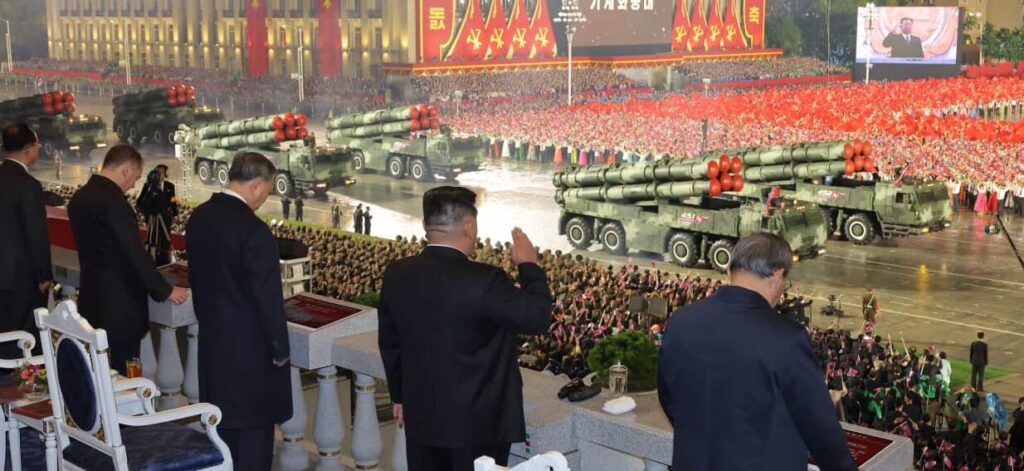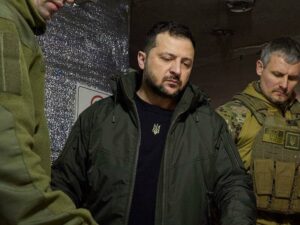
North Korea showcased its new Hwasong-20 intercontinental ballistic missile (ICBM) during a military parade attended by senior officials from Russia and China on March 10, 2024. This event, commemorating the 80th anniversary of the ruling Workers’ Party, highlighted the regime’s growing military capabilities and its geopolitical alliances.
The parade featured a display of advanced weaponry, with thousands of citizens in traditional attire participating in the festivities in Pyongyang. The Korean Central News Agency (KCNA) described the Hwasong-20 as North Korea’s “most powerful nuclear strategic weapon system,” emphasizing its significance in the country’s defense strategy. Alongside the ICBM, the parade included long-range strategic cruise missiles, drone launch vehicles, and various ground-to-air and ground-to-ground missiles.
The presence of notable figures such as Dmitry Medvedev, the deputy head of Russia’s Security Council, and Li Qiang, Premier of China, underscored the strengthened ties among these nations. Both leaders were seated near North Korean leader Kim Jong Un, reflecting a united front among the three countries.
In his address, Kim expressed pride in his nation’s military, stating that the “invincible” army bolsters the party’s efforts to navigate challenges and secure a brighter future. He also referenced North Korean troops who have reportedly fought alongside Russian forces in Ukraine, suggesting that their participation demonstrates a commitment to “international justice.” According to South Korean officials, around 600 North Korean soldiers have died and thousands more have been injured in this conflict.
The display served to project North Korea’s military advancements and its resolve to strengthen its defense capabilities. KCNA noted that the event showcased the country’s “inexhaustible defense technology potential,” which the agency claims the world can no longer overlook.
These celebrations occurred against a backdrop of evolving geopolitical dynamics in the region. Following a statement from Seoul indicating that a meeting between North Korea and the United States “cannot be ruled out” at the upcoming APEC summit, the implications of this parade resonate beyond Pyongyang. Kim Jong Un, who has previously met with US President Donald Trump, has since declared North Korea an “irreversible” nuclear state.
The recent collaboration among North Korea, Russia, and China has raised concerns in Seoul. Seong-Hyon Lee, a visiting scholar at the Harvard University Asia Center, commented on the broader implications of the parade, describing it as a culmination of a significant shift in regional geopolitics. He warned that the strengthened alliance between Seoul and Washington would likely face a robust trilateral response from Pyongyang, Moscow, and Beijing.
As the international community assesses the impact of this display, it becomes clear that North Korea’s military ambitions and alliances are evolving, signaling a new phase in its long-standing pursuit of security and recognition on the global stage.







